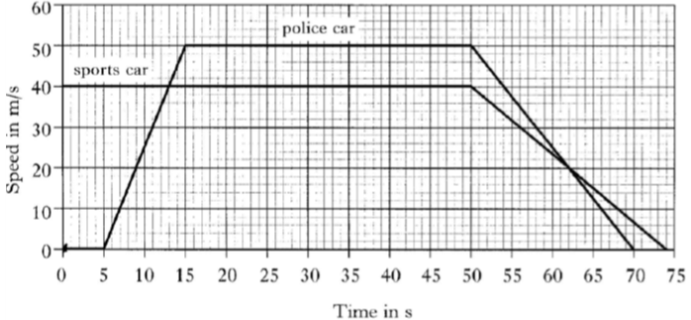1. On one road the speed limit is 90 km/h.
(a) Show by calculation that this speed limit is 25 m/s.
(b) A speed camera is used to detect motorists breaking the speed limit on this road. A section of the road in view of the camera is marked out with white lines spaced 2 m apart. The camera unit is fitted with a radar speed sensor.
When a passing vehicle breaks the speed limit, the camera takes a pair of photographs 0.4s apart.
When the speed camera film is later analysed, the following pair of photographs is obtained:
Calculate how much faster than the speed limit of 25 m/s this car was travelling.
(c) Further along the road, a sports car travelling at a constant speed of 40 m/s passes a police car which is parked in a lay-by. The police car follows the sports car.
(d) The speed-time graph shows the motion of both cars from the time the sports car passes the parked police car.
(i) How long does it take for the police car to start to move?
(ii) Calculate the acceleration of the police car when it sets off.
(iii) Fifty seconds (50 s) after being passed by the sports car, the police car has travelled 2000 m. Show by calculation that the cars are side by side at this time.
(iv) By calculating the distance travelled by each car while decelerating, show which car stops in front and the distance between them when both cars are stopped.
2. A cyclist starts a journey in first gear and uses two other gears during the journey. After a short time the cyclist is forced to brake sharply and comes to a halt. A speed-time graph of the journey is shown.

At point P the cyclist changes from first gear to second gear. At point Q the cyclist changes from second gear to third gear.
(a)
(i) Before braking, which gear is the cyclist using when the acceleration is greatest?
(ii) Which gear does the cyclist use for the shortest time?
(b) Calculate how far the cyclist travels in second gear.
(c) Calculate the deceleration.


